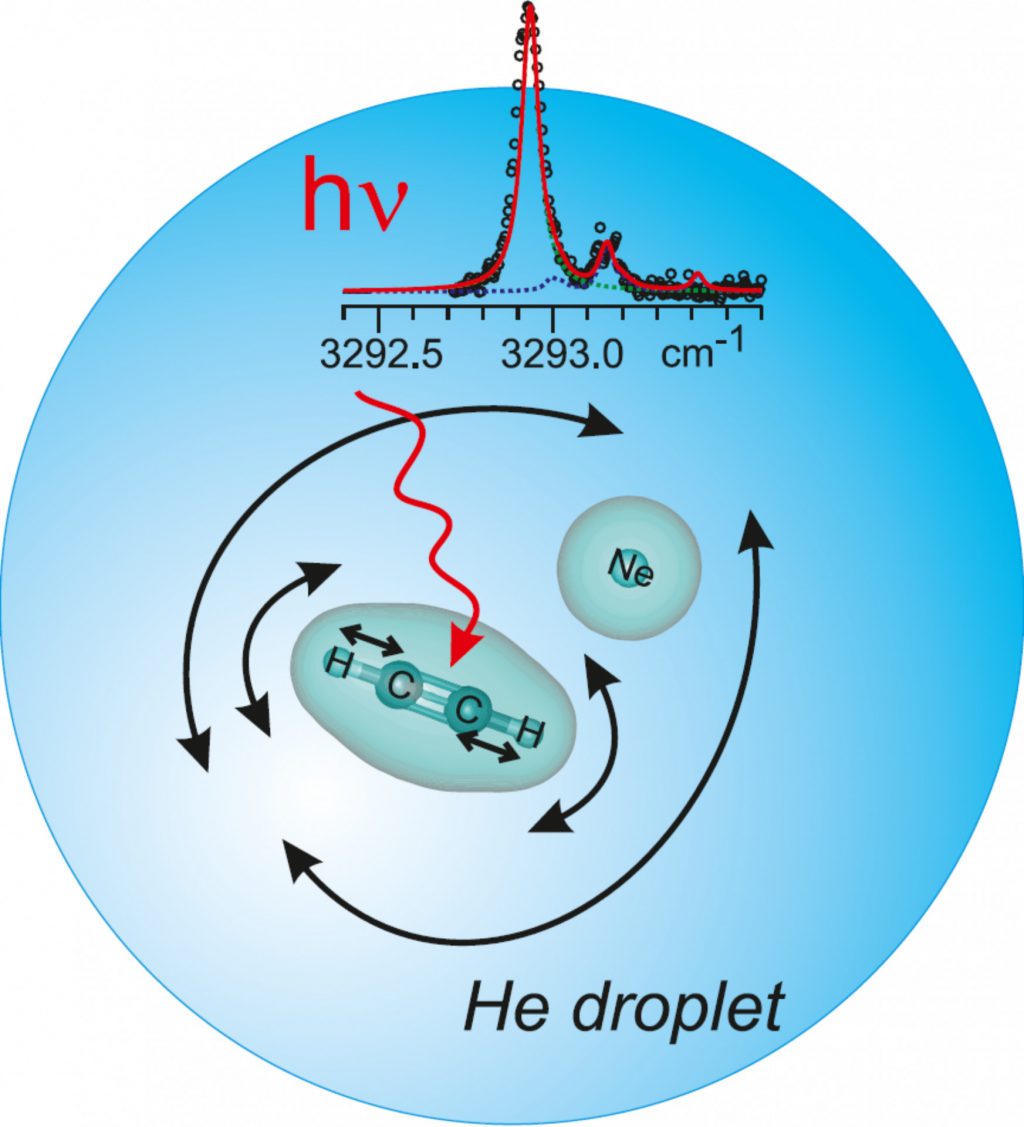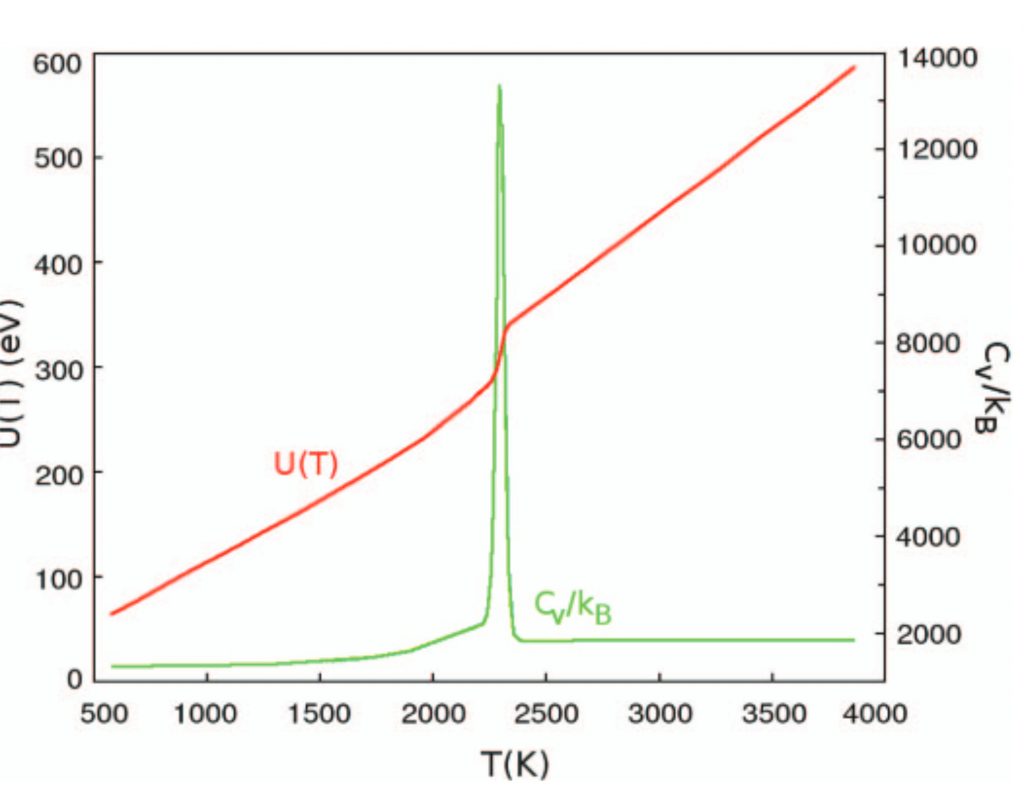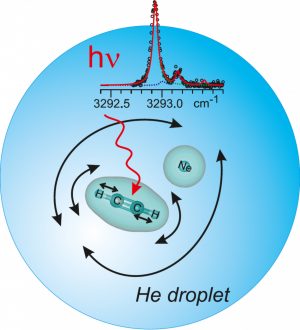Reaction Dynamics Group
Spectroscopy of molecular complexes
Infrared spectroscopy of a molecular complex hosted in a helium droplet makes possible to explore the structure of a complexe as well as its interaction with an environment. The Goutellium experimental setup carry out this type of study with two highly interconnected goals:
- The study of the van-der-Waals complex structure, in collaboration with the SBM Research Group.
- The study of the dynamical effects induced by the interaction with finite-size bosonic fluid (the helium droplet) on the deformations of a very flexible molecular system that is hosted there.
The helium droplet is described as a superfluid medium, except when in contact with a molecular potential which induces its a partial structuration. Our Group is one of the very few in the world to address this issue. It conbines both experimental and numerical approches.

Vibronic Spectroscopy of ions
The Reaction Dynamics Group has largely contributed to the development of slow electron spectroscopy (SPES) which provides the vibrational structure of ions in the geometry of the ground state neutral molecule. This technique is an improvement of TPEPICO or TPES techniques. This activity is carried out on the SAPHIRS device installed on the DESIRS beamline of the SOLEIL Synchrotron. We participate to 4 scientific projects:
- Electronic spectroscopy of rare gas ions and ionic rare gas clusters (PI DyR)
- Spectroscopy of arylcetones (PI DyR)
- Photoionization dynamics of biological relevant molecules (PI Pr. Majdi Hochlaf / MSME), (PI Dr. Niloufar Shafizadeh / ISMO)
- Ionization dynamics of astrochemical interest compounds (PI Pr. Martin Schwell / LISA)

Modelization
The simulation of structures and the thermodynamics of the complexes are critical infomations for the interpretation of experimental studies. This activity has several aspects:
- Complex structure calculation in quantum chemistry. The calculations made in the team are in the ground state.
- Simulation adjustment of experimental spectra to extract the spectroscopic constants (see helium droplets results). These results compared to the values provided by the quantum chemistry calculations, probe the structure of the complexes and the interaction between the molecules and their nvironment.
- Monte-Carlo simulations to model the structure and thermodynamics of large clusters or complexes. These simulations were performed on iron clusters, based on a potential that has been developed in the laboratory, to determine thermodynamic quantities over a wide range of energy.




